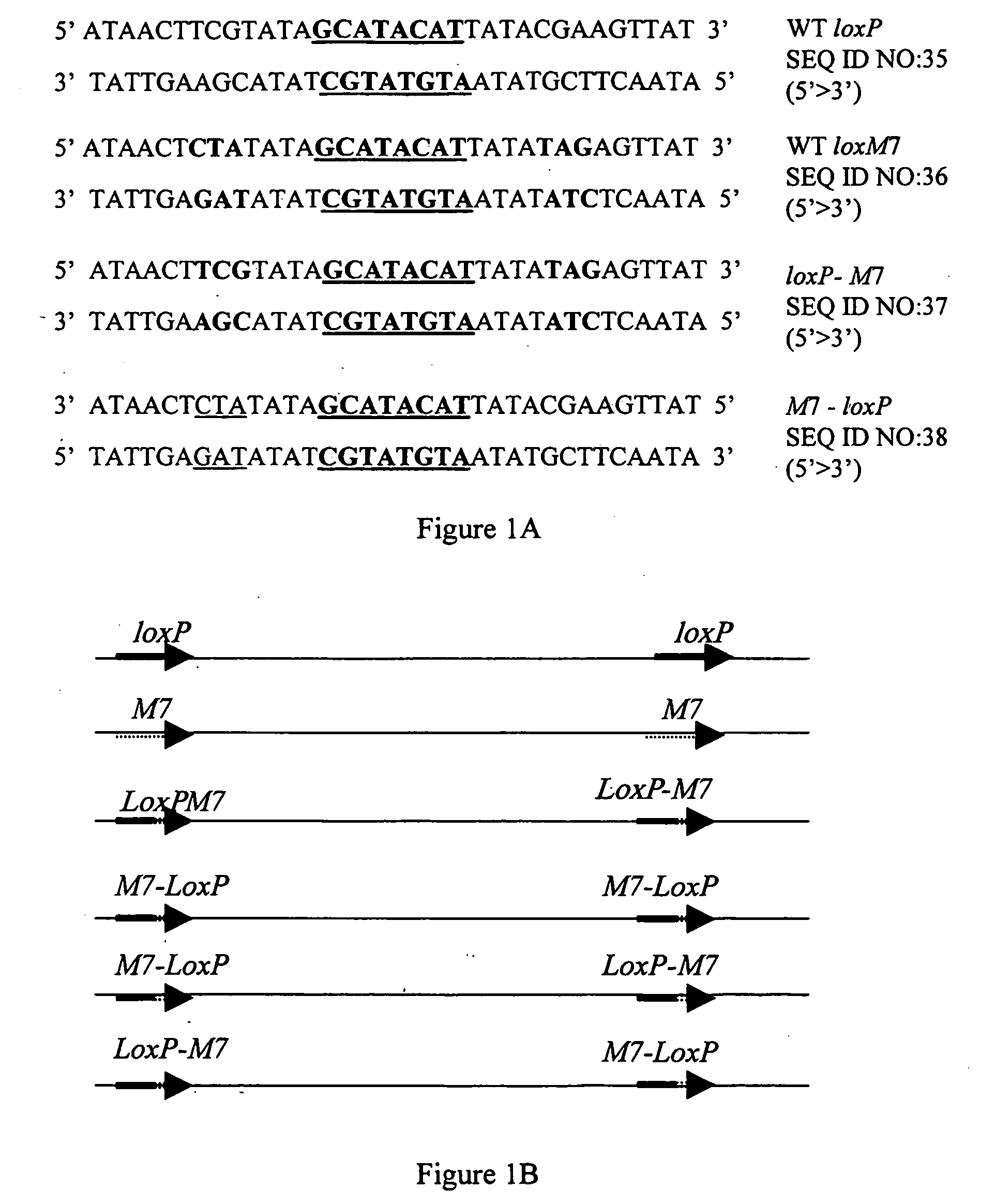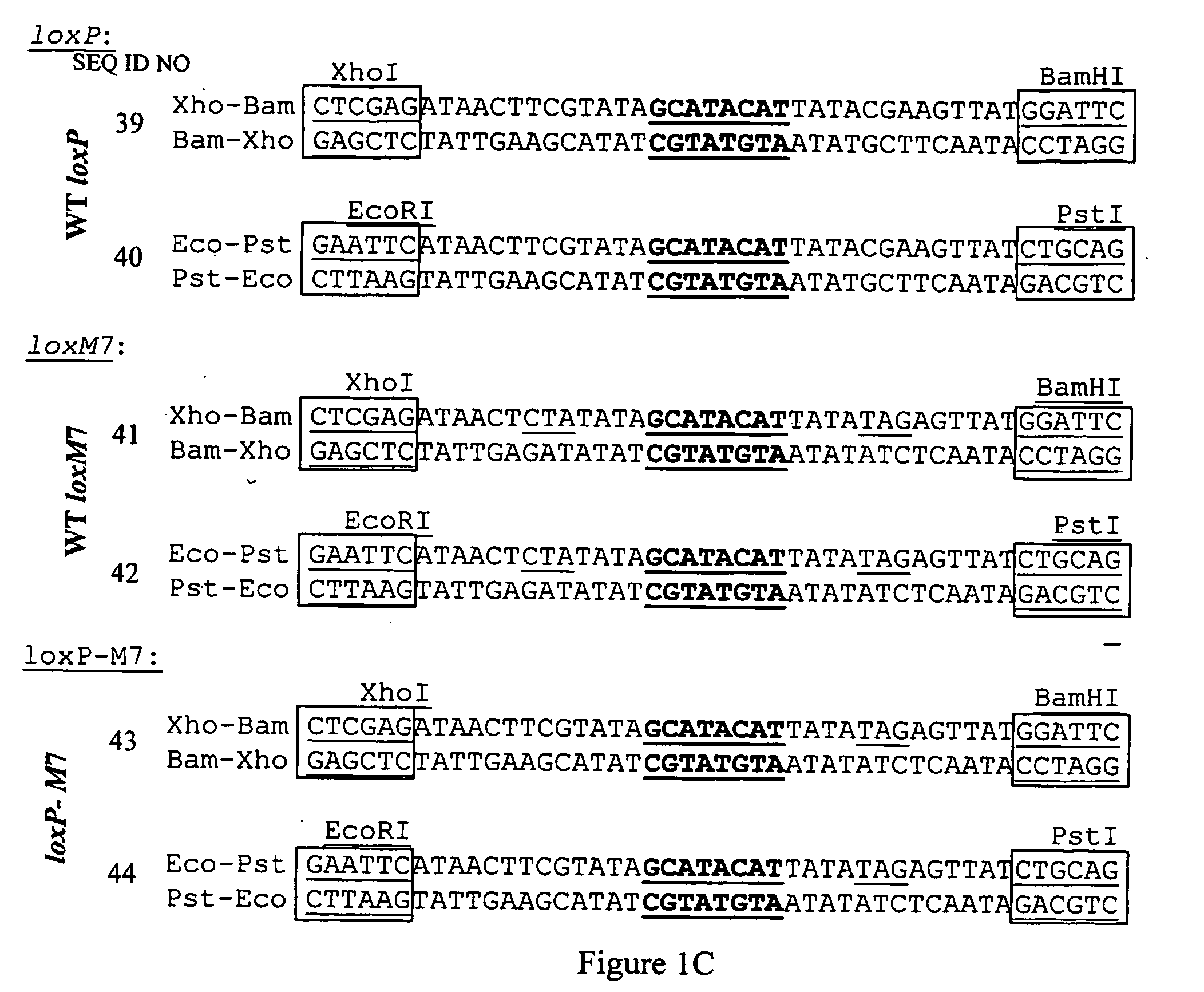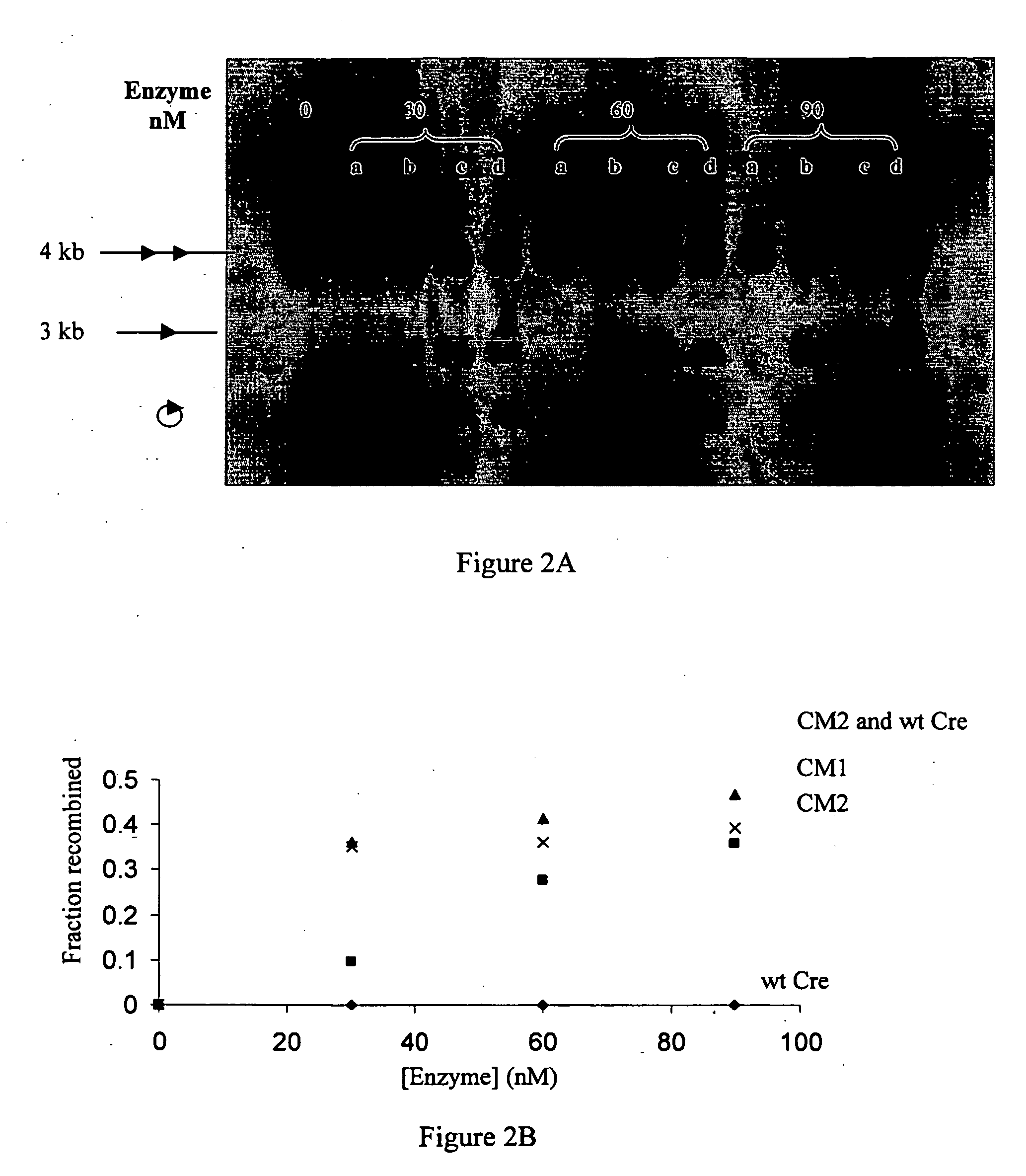Enzymes, cells and methods for site specific recombination at asymmetric sites
a site specific and asymmetric technology, applied in the field of site specific recombination at asymmetric sites, can solve the problems of recombination events that are freely reversible, reverse recombination events cannot readily occur, and the need for precise palindromic recombination sites, etc., to achieve the effect of facilitating recombination and facilitating recombination
- Summary
- Abstract
- Description
- Claims
- Application Information
AI Technical Summary
Benefits of technology
Problems solved by technology
Method used
Image
Examples
example 1
Design of an In Vitro Recombination Assay for Asymmetric Lox Variant Sites
[0154]We approached the question of asymmetric recombination by employing modified Cre recombinase versions recently developed for different lox-related site specificities (Santoro et al., ibid). The experimental design consisted of an in vitro recombination assay which allowed us to monitor the efficiency of recombination obtained using one or a combination of two site-specific Cre-related recombinases on an asymmetric lox site substrate. Specifically, a 4-kb linear double-stranded DNA molecule containing a pair of chimeric asymmetric sites, termed loxP-M7, served as the substrate. Each loxP-M7 site was composed of a wild-type loxP half-site and lox M7 half-site (FIG. 1A). Each member of the pair of lox sites was positioned in direct orientation relative to the other, flanking an intervening ˜1-kb DNA fragment. A recombination event was expected to excise the intervening DNA fragment, resulting in a 3-kb line...
example 2
Recombination of Asymmetric Lox Sites In Vitro
[0156]The recombination activities of wt Cre, CM1, CM2 and the wt Cre-CM2 mixture were first assayed at concentrations of 30, 60 and 90 nM with 1.25 nM of the loxP-M7 DNA substrate in a reaction time of 1 h (FIGS. 2A-2B). Wild type Cre exhibited no measurable activity with the loxP-M7 DNA substrate at all enzyme concentrations examined. CM2 exhibited measurable but inefficient activity, recombining 10% of the substrate within the reaction period, when present at a concentration of 30 nM. In contrast, the catalytic efficiencies of CM1 and the wt Cre-CM2 mixture were significantly higher. When present at concentrations of 30 nM and 60 nM, CM1 and the wt Cre-CM2 mixture catalyzed approximately 35% substrate recombination in 1 h (FIGS. 3A-3B).
[0157]In order to compare the rates at which wt Cre, CM1, CM2 and the wt Cre-CM2 mixture approach equilibrium in recombining the loxP-M7 asymmetric DNA substrate, a reaction containing 30 nM enzyme and ...
example 3
The Formation of a Heterotetrameric Structure
[0159]The present study demonstrates the feasibility for site-specific recombination of an asymmetric lox site by a combination of two different Cre variants possessing selective binding specificities for their respective cognate half-site on the site. The results presented here strongly suggest that recombination in this system is catalyzed by a heterotetrameric assembly of the two Cre variants (wild type Cre and the CM2 mutant). This conclusion is consistent with the fact that the DNA binding and catalytic domains within Cre reside in two distinct and independent locations on the protein (e.g. Gopaul et al. EMBO J. 1998 17, 4175-4187). This arrangement permits the formation of a recombination synapse involving two asymmetric lox sites aligned in an antiparallel orientation and each bound by a wt Cre-CM2 heterodimer (FIG. 4). The recombination synapse involving two of each Cre variant monomer and two asymmetric lox sites can then go on t...
PUM
| Property | Measurement | Unit |
|---|---|---|
| Volume | aaaaa | aaaaa |
| Volume | aaaaa | aaaaa |
| Recombination enthalpy | aaaaa | aaaaa |
Abstract
Description
Claims
Application Information
 Login to View More
Login to View More - R&D
- Intellectual Property
- Life Sciences
- Materials
- Tech Scout
- Unparalleled Data Quality
- Higher Quality Content
- 60% Fewer Hallucinations
Browse by: Latest US Patents, China's latest patents, Technical Efficacy Thesaurus, Application Domain, Technology Topic, Popular Technical Reports.
© 2025 PatSnap. All rights reserved.Legal|Privacy policy|Modern Slavery Act Transparency Statement|Sitemap|About US| Contact US: help@patsnap.com



